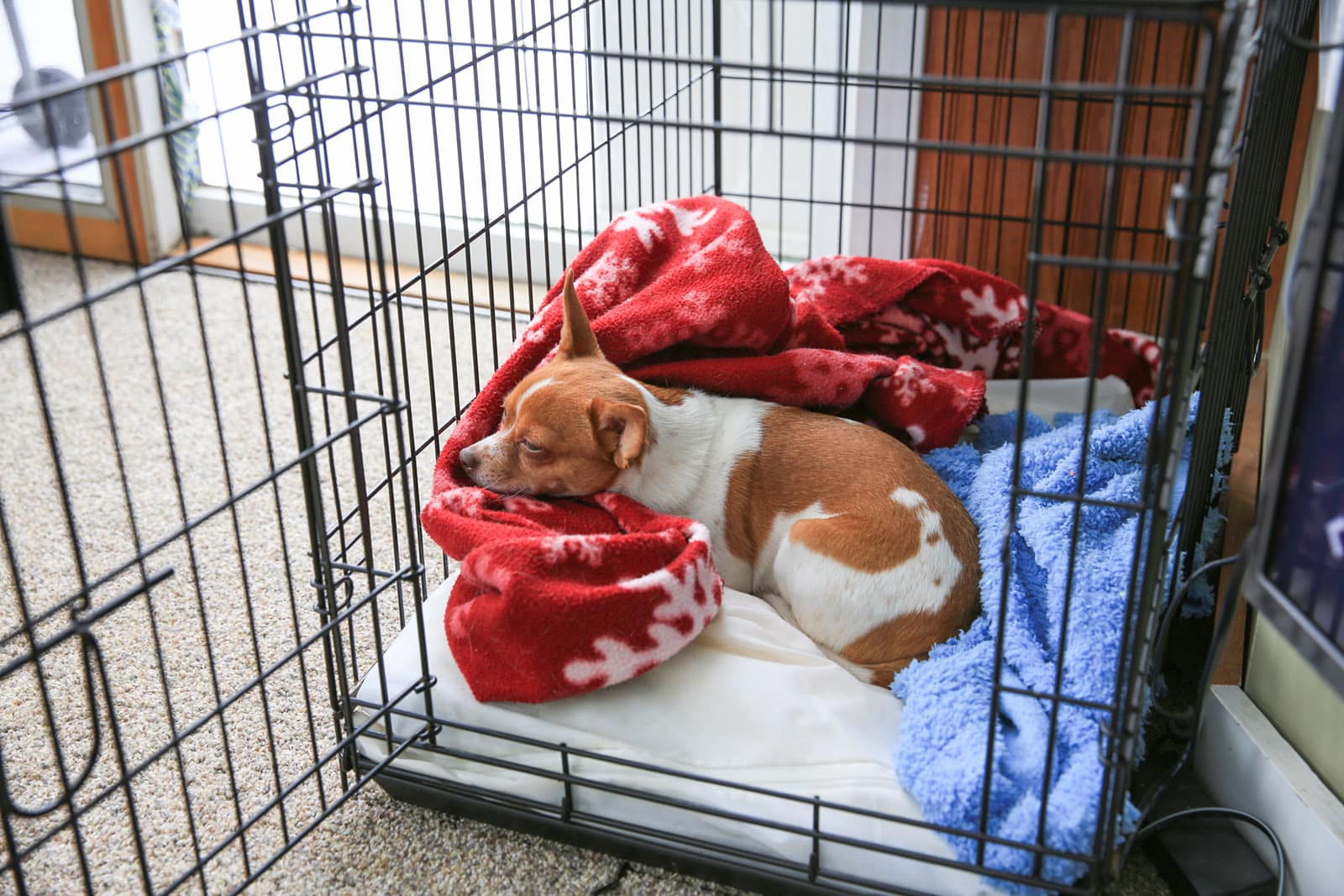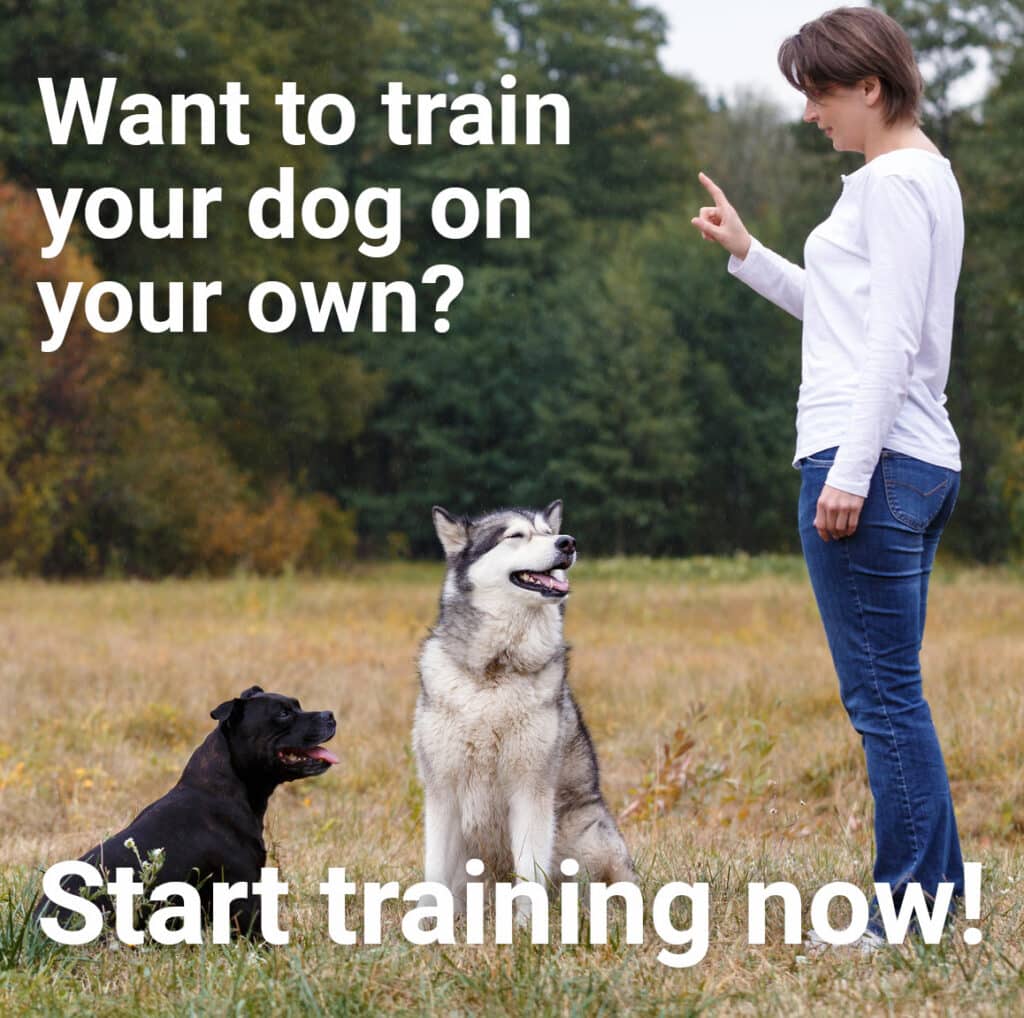Relaxing in your favorite chair is a pleasure you look forward to. A crate can provide just the same haven of comfort to your dog. It’s natural for a dog to use a den as a refuge, and a crate can serve as an excellent substitute, becoming a warm, safe, quiet hideaway.
Good crate training can make your life and your dog’s much easier. If you introduce them to the crate in a positive manner, it is a valuable tool for you as well as a source of security for them. However, if the dog feels he is being punished or abandoned to the crate, he may never be comfortable in it. You must balance their time in the crate with quality time spent with you.
What to look for when choosing a crate:
Plastic ‘Airline’ crates with solid sides create a true den-like environment. They provide adequate ventilation, good shade, and are easy to clean. Some dogs prefer a more enclosed environment over the wire crates. Look for strong, easy-to- operate doors and latches.
Metal grates are well ventilated, but heavy. They are easily broken down for storage or transportation. Some dogs do not like them because they are too cage like, while others prefer them because they can easily see all around them.
Mesh kennels are lightweight, breathable, attractive and highly portable, and break down easily for storage. They’re only good for older dogs who have proven themselves trustworthy not to chew or claw their way through the mesh.
How do I crate train my dog?
Whether you’re training a young puppy or an older dog to use a crate, time and patience are crucial. Every dog is different, and each is going to react in their own unique way. Pups can be easier to train, while some older dogs might have past memories of crates and will either love them or hate them. Crate training usually takes a few days if you are consistent, persistent, patient and kind.
Before starting, consider these general rules and precautions:
• The crate should be big enough for a dog to stretch out in and stand up comfortably.
• Puppies should not start in a huge crate as they might want to sleep in one corner and soil in another. Just big enough to move about and settle down.
• Never leave a collar on a crated dog – he can hang himself too easily.
• All interactions with the crate should be positive.
• Always praise your dog when he enters the crate.
• Keep the crate available to your dog so he can choose to go in whenever he wants.
• Feeding your dog in the crate can help make positive associations.
• Whining can be ignored, or stopped with a ‘startle’ noise and a firm “quiet.”
• Do not “coo” or look at the dog when he is complaining – this rewards bad behavior.
• Do not shove them in the crate and walk away, thinking they’ll just get over it. This can set them up for panic.
• Do not put your dog in the crate and leave the house until they have proven that they can accept it. Leave for short periods, and gradually increase the time you’re away.
• If your dog soils the crate, it could mean the crate is too large, or they were in it too long. It could also mean they weren’t eased into the training and are stressing out.
Day One
The crate should be on the floor with the door open. Introduce the crate by throwing toys inside the crate while playing with your dog, letting them go in and out on their own. Feed them in front of or inside the crate, placing the bowl as far in as they will tolerate.
When your puppy is sleepy, put them inside the crate and lie down with your head blocking the doorway. Pretend you’re napping, too; block your dog’s attempts to escape. Stay calm, and don’t make eye contact. Within a few minutes, they should lie down and sleep. As soon as they fall asleep, quietly go about your business, but leave the crate door open. Be aware that when they wake up, they will need a potty break.
Day Two
Keep throwing toys and occasional treats into the crate, and feed them as far inside as they will tolerate, but don’t shut the door unless they are comfortable.
Naps should be taken inside the crate. As a cue, say “kennel up,” or whatever other instruction you prefer. Reward them with a treat and a loving tone after they comply and get into the crate.
Day Three
Repeat the above steps. While watching TV, reading, or at the computer, put the crate beside you, ask your dog to “kennel up,” and give them a few toys. Shut the door. If they bark you can either ignore them, or stop it with a “startle,” a short sharp noise like a clap, an firm (but not loud) “quiet” with a tap on the crate. Dogs will typically only challenge you three to five times and then calm down, so be patient. When they have been quiet for a little while, let them out and praise their effort.
Lots of short periods in the crate will help them understand that it doesn’t mean you are leaving them for hours, and they will be more cooperative about going in. Vary the time by confining them for short periods building to longer sessions. Gradually increase the periods your dog stays in the crate, and the distance you are away from it. This will prepare them for the longer times you have to be gone. Do not expect young puppies to be good in a crate for much longer than the length of a nap – they just don’t have that much bladder control. Typically 1 hour per month old, but you have to build up to it.
Remember that all dogs are different – some won’t flinch at crates while others can easily be unsettled. If the initial introduction is fun and comforting, your dog will come to enjoy his den as much as you enjoy your favorite armchair.
Crate training has many advantages:
• Keeps your dog safe and out of trouble when you can’t watch them.
• Keeps them safe and contained in the car, and when traveling in general.
• Wonderful for potty training, since pups will not naturally soil their den.
• Gives you a break when you are overwhelmed by puppy energy.
• Helpful when visiting or at the vet’s as it gives the pup a place to feel safe.
• Helps to calm insecure or nervous dogs, and those frightened of loud noises (thunder/fireworks).
• Fends off separation anxiety by teaching your dog to be alone and to entertain themselves.
• The crate becomes a familiar home that travels with them everywhere.
Keep in mind that:
• The crate is not a replacement for responsible training – avoiding problems does not teach.
• Never use the crate for punishment, as this creates anxiety.
• A dog can panic and hurt themselves if not properly trained to a crate.
• A dog left too long in a crate, day after day, can become bored, sensory-deprived, destructive, anxious and/or depressed, and may exhibit behavioral disorders.
• If the crate doesn’t offer adequate ventilation, they can become overheated.
• Crates are not a substitution for training. They are a tool and should not be where your dog spends most of his time.
When crates are used properly they are an invaluable resource and comfort to your dog. We believe if all dogs were properly crate trained there would be less dogs in shelters.


